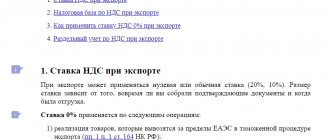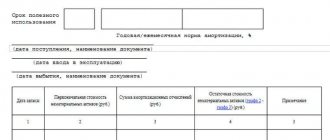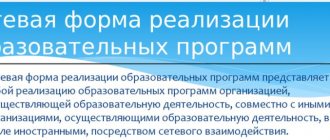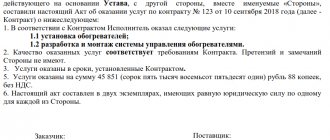From the beginning of 2021, the VAT rate will increase from 18% to 20%. This will be an unpleasant “New Year’s gift” for businessmen who pay VAT. The rate increase will also affect those who are exempt from this tax, for example, those who work in simplified jobs, but are in a contractual relationship with VAT payers.
The introduction of any changes is associated with a transition period. We'll tell you what taxpayers need to pay attention to as January 1, 2021 approaches.
From this article you will learn:
- Who will be affected by the VAT rate increase?
- When to make changes to contracts
- Who will pay for the rate increase?
- What do officials say about changes in the contract price when the VAT rate increases?
- What will the court decide if the transaction partners do not agree?
- How to calculate VAT during the transition period
- When is a correction invoice needed?
Who will and will not be affected by the VAT rate increase?
Law No. 303-FZ dated 03.08.18 amends the VAT rate specified in clause 3 of Art. 164 Tax Code of the Russian Federation. From January 1, 2021, the tax rate will increase from 18 to 20%.
The increase in VAT will not affect all taxpayers: there is a preferential list of goods, their sellers will remain working at a rate of 10%.
For whom the rates will remain the same
Sellers of “preferential” types of goods using a 10% rate.
This applies to goods and services listed in paragraph 2 of Art. 164 Tax Code of the Russian Federation:
- food, except delicacies;
- children's clothing and footwear, except sportswear;
- books and periodicals, except advertising and erotic publications;
- medical products;
- domestic air transportation services.
Exporters and other businessmen using the 0% rate.
The list is given in paragraph 1 of Art. 164 Tax Code of the Russian Federation:
- international shipping;
- supply of foreign diplomatic missions in the Russian Federation;
- transportation of gas, oil and petroleum products;
- customs processing;
- international electricity supplies.
For whom the rates will change
Taxpayers under the general tax regime
who operate in the domestic market and sell goods not included in the preferential list. For them, the rate will increase by 2 percent - from 18% to 20%.
The settlement rate applied in special cases will increase from 15.25% to 16.67%:
- Sale of an entire enterprise as a property complex (clause 4 of article 158 of the Tax Code of the Russian Federation);
- Provision by non-resident organizations of electronic services for individuals residents of the Russian Federation (clause 5 of Article 174.2 of the Tax Code of the Russian Federation):
- advertising placement;
- services of electronic trading platforms;
- provision of domain names, hosting services, website administration and support;
- searching, storing and processing information via the Internet;
- granting rights to use books, audiovisual works and other information presented in electronic form.
| Natalya Tantsyura, head of the Dispute Resolution practice, United Consulting Group, explains how the rate increase will affect business: |
First of all, the change in the VAT rate will affect medium and small businesses, since changes in the price of monopolists’ products will not affect demand. A decrease in demand for the products of small and medium-sized businesses will “remove” many players who are still unstable. To avoid this, entrepreneurs will plan various maneuvers in the form of keeping prices at the same level to their detriment, various bonuses and premiums for customers.
The rate increase will also affect those companies that do not pay VAT (USN or patent) - since due to price increases by suppliers, they will also have to raise prices.
In general, an increase in VAT will lead to a slowdown in business processes and economic growth of many companies, including large ones.
The reality will be that the cost of the “tax increase” will fall on the end consumer.
A good solution for small businesses would be to switch to the simplified tax system.
Many will also save in illegal ways: lay off workers who are officially employed, or pay wages in envelopes.
Companies that work on government contracts will be forced to refuse contracts, since they also work with simplified companies. And the increase in VAT will fall on the shoulders of companies using the simplified tax system, their profitability will decrease significantly, which will lead to debt on current obligations and, in the future, to bankruptcies.
With this entire trend, there will be a decrease in the purchasing power of the population.
How much VAT will be in 2021 and what will change for taxpayers
From what date the VAT is expected to increase to 20% we have analyzed: state and commercial enterprises must switch to the new tax exactly at midnight from 12/31/18 to 01/01/19. But how this will happen is not entirely clear to many.
Let us clarify that the increased premium will not apply to all product groups. The VAT change from 2021 will only affect the basic tax. At the same time, according to Art. 164 of the Tax Code of the Russian Federation, preferential rates of 0% and 10% will remain unchanged. Socially important products, medicines and other important components of the consumer basket will not become more expensive.
The increase in the VAT rate from 2021 will affect the cost of services provided, products sold, as well as property rights to which preferential surcharges do not apply.
Innovations will also affect services and products, prices for which are set by government agencies. This will also lead to increased utility bills. This information was confirmed by the Ministry of Finance of the Russian Federation in letter No. 03-07-11/53970, published on August 1, 2021.
According to the country's leadership, innovations will increase the federal budget by 600 billion rubles. in year. They plan to spend this money on the development of service structures, the development of new economic sectors, and the financing of necessary social programs. This was stated in letters No. 03-07-14/54365 and No. 03-13-14/54406, signed at the beginning of August 2021.
It can be assumed that innovations will affect not only the cost of goods and services, but also the preparation of financial statements. Most likely, adjustments will be made to the sales book and the established declaration form. Documents that do not display the tax rate will remain without modification. We will learn more about the main innovations only in the 1st quarter of 2021.
Subscribe to our channel in Yandex Zen - Online Cashier! Be the first to receive the hottest news and life hacks!
When to make changes to contracts
Sales, contracting and service agreements are often concluded for a long period of time, which is why they are taking over 2021 and 2021. In this case, businessmen have a question: do they need to make changes, and if so, what?
Changes are not needed if:
Example:
The price of the product per unit is 1,000 rubles excluding VAT. The total amount payable is determined based on the tax rate in effect on the date of shipment:
- until 01/01/2019: 1,000 + 1,000 × 18% = 1,180 rubles;
- from 01/01/2019: 1,000 + 1,000 × 20% = 1,200 rubles.
- The goods are supplied at preferential rates of 10% or 0%;
- The price for each delivery is agreed upon separately;
- The price is set without tax, and the wording “excluding VAT” is stated in the text of the contract;
- The terms of the agreement provide for “automatic” price adjustment when the VAT rate changes. The price is recalculated similarly to the previous option. The difference is that the total amount in the contract is indicated including tax.
In all other cases, an additional agreement must be included in the contract to separate the 2021 and 2021 shipments. This will help avoid disputes about the cost of goods with counterparties.
This mainly applies to existing agreements that were signed before the decision was made to increase the VAT rate - in the first half of 2021 and earlier. Agreements concluded later in most cases include this section. If a businessman forgets about this agreement, the contract can be supplemented. The main thing is that the agreement is dated 2021.
When concluding a purchase and sale agreement for goods at a price of 1,000 rubles per unit, include in the agreement an agreement with reference to the new edition of Art. 164 Tax Code of the Russian Federation:
The price per unit of goods excluding VAT is 1,000 rubles. VAT is charged additionally at the rates established by clause 3 of Art. 164 of the Tax Code of the Russian Federation, namely: until December 31, 2018 inclusive, the tax is calculated at a rate of 18%, starting from January 1, 2019 - at a rate of 20%
VAT 20% and its changes in a continuing contract
We all know that from January 1, 2019, the VAT rate was increased to 20%. In this regard, many companies, especially those with many different ongoing contracts, are up to their necks in additional agreements to increase the cost of the contract by 2%.
It has been a long time since we all read and re-read the explanations of the Federal Tax Service regarding the need to enter into additional agreements when changing the VAT rate. Once again I’ll point out an excerpt from K+, in case anyone hasn’t seen it:
“Payment of VAT from 2021.
Situation 1. VAT is not included in the contract price and is charged additionally (“The cost is 100 rubles, in addition to VAT”).
An additional agreement is only necessary if the seller agrees to reduce the price of goods, work or services due to an increase in the VAT rate.
Situation 2. VAT is not included in the contract price (“The cost is 100 rubles”).
In this situation, the tax is included by default in the contract price. The seller independently allocates the amount of VAT from this price. Exception - from the terms of the contract or the circumstances preceding its conclusion, it follows that the tax is not taken into account in the price of the contract. This is the position of the Plenum of the Supreme Arbitration Court of the Russian Federation, the relevance of which was indicated by the Ministry of Finance in the spring.
An additional agreement is needed if you decide to review the procedure for determining the price or change it.
Situation 3. VAT is included in the contract price (“The cost is 100 rubles, including VAT”, “The cost is 100 rubles, including 18% VAT”).
The total cost of the goods does not change, and the costs due to the increase in rate are borne by the seller. An additional agreement is necessary if the buyer agrees to bear these costs and increase the contract price. It is not necessary to enter into an additional agreement just to change the rate in the contract from 18% to 20%.
So that's what I mean. The other day I was solving an interesting work problem, which, in fact, I want to tell you about.
Within the company, it was necessary to prepare additional agreements to increase the cost of the contract by 2% (VAT), since in accordance with clause 1 of Art. 452 of the Civil Code of the Russian Federation, an agreement to amend a contract must be made in the same form as the main contract. If the agreement was made in writing, then the conclusion of a written additional agreement, including an increase in rent, is inevitable. But is it?
Since the company has 980 contracts, the same number of agreements was required. It would have been possible to create a macro and simply stamp the dopniks, but I took a different route.
I’ll make a reservation, most of the “experimental” contracts are leases, in some places real estate (registration is not required), in others it’s even movable, the value of the contract is defined as the price of the contract + “including VAT.” In all lease agreements, the lessor has the right, in agreement with the tenant, to change the rental price under the agreement no more than once a year. The same can be applied if the contract does not stipulate at all the procedure for changing the cost of rent. (Part 3 of Article 614 of the Civil Code of the Russian Federation).
Using the right to change the rent, we issue invoices for a new amount, increasing the payment amount by 2% (VAT). And, in fact, that’s all... The counterparty pays this amount, thereby agreeing to the increase, without signing any additional agreement. At the same time, owner-lessors do not lose 2%, and tenants are not plunged into the routine work of preparing additional agreements.
What about paragraph 1 of Art. 452 of the Civil Code of the Russian Federation, you ask, is there a mandatory written procedure? The answer is simple - in accordance with clause 5 of the Information Letter of the Presidium of the Supreme Arbitration Court of the Russian Federation dated 05.05.1997 No. 14, a contract in writing can be considered amended if, in response to a written proposal to amend the contract, the corresponding implied actions are taken.
These are the pies.
Who will pay for the rate increase?
Who should pay the extra 2%? Seller or buyer? Depends on the terms of the concluded contract.
When the buyer pays for the increase
If the terms of the contract provide for a price adjustment when VAT increases, the buyer pays the difference of 2%. In this case, he will have to come to terms with the price increase, since the terms of the transaction will not allow this fact to be challenged.
If the price of the product was 1,000 rubles without VAT and 1,180 rubles with VAT, then from 01/01/2019 it will be 1,200 rubles with VAT.
As a result, the buyer will pay 20 rubles more or 1.7% (20 rubles / 1,180 rubles).
When the seller pays for the increase
If the price in the contract is indicated including VAT and does not provide for adjustment, it can only be changed by agreement of the parties. In this case, the buyer, guided by the principle of freedom of contract (Article 421 of the Civil Code of the Russian Federation), is not obliged to meet the seller halfway and may not agree to an increase in price.
Then the seller, starting from 01/01/2019, will be required to allocate VAT at a rate of 20% from the total sales price.
If the final price of a product unit is 1,180 rubles, then the price without VAT after 01/01/2019 will be equal to 1,180 rubles / 120 × 100 = 983.33 rubles.
The seller will lose 16.67 rubles. (1,000 rubles - 983.33 rubles) or 1.67% of the cost.
How the parties to the transaction can agree
When the buyer pays VAT, the seller may try to negotiate with him, citing the fact that the “additional” 20 rubles can be deducted on the declaration and reduce the amount payable to the budget. As a result, the buyer will lose practically nothing. The difference is that you will have to pay the supplier immediately, and the savings on VAT will arise at the end of the tax period (quarter).
If the buyer works under one of the special tax regimes and does not pay VAT, then he takes the entire amount into account as expenses and loses 1.7% “irrevocably”. In this case, the seller can offer a compromise - split the difference in half. That is, at a price of 1,000 rubles excluding VAT, increase the total amount not by 20, but by 10 rubles - up to 1,190 rubles.
| Olga Anatolyevna Shvedchikova, Deputy General Director for Economics of Market Line LLC, tells how the increase in VAT will affect businesses that pay tax at a rate of 10%. |
— How will the VAT increase affect your business?
— 98% of our sales come with a VAT rate of 10%, so the additional charge will be minimal, but deductions for work and services received will increase. Thus, the amount of VAT to be transferred to the budget will decrease, and the percentage of the tax burden will also decrease.
— What consequences do you expect/predict in your segment?
— Due to the reduction in the percentage of the tax burden, requests from the Federal Tax Service to justify the indicator will become more frequent. Financial results and cash flows are not expected to be significantly impacted.
— Will anything else change with the VAT increase (for example, the tax return, the form of sales and purchase books)?
- Yes, I think that the declaration form will be adjusted, the purchase books and sales books will also be added, fields will be added to reflect all rates: 10%, 18%, 20% - this is necessary during the transition period.
General approach
From January 1, 2021, the Law of August 3, 2018 No. 303-FZ (hereinafter referred to as Law No. 303-FZ) with amendments to the Tax Code of the Russian Federation is in force. He demanded a kind of transition period for VAT from 18 to 20% in relation to goods (work, services), property rights specified in paragraph 3 of Art. 164 Tax Code of the Russian Federation.
The Federal Tax Service proceeds from the fact that:
- a 20% rate applies to goods (work, services), property rights shipped (performed, rendered) transferred starting from January 1, 2021 (clause 4 of article 5 of Law No. 303-FZ);
- does not provide for exceptions for contracts concluded before the entry into force of Law No. 303-FZ and having a continuing nature with the transition to 2021 and subsequent years .
Consequently, with regard to sales, etc., the VAT rate of 20% applies regardless of the date and conditions of the conclusion of contracts.
At the same time, on the basis of paragraph 1 of Art. 168 of the Tax Code of the Russian Federation, in addition to the shipping price, starting from 01/01/2019, the seller is obliged to present to the buyer for payment the amount of tax calculated at a rate of 20 percent.
In this regard, there is no need to make changes to the agreement regarding changes in the VAT rate. Although its parties may clarify the calculation procedure and the cost of sales in connection with an increase in the VAT rate.
Also see “Additional agreement to the agreement on changing the VAT rate from 2021: sample”.
An increase in the VAT rate does not change the procedure and time for determining the tax base for VAT for the payer.
What do officials say about changes in the contract price when the VAT rate increases?
Government agencies provide clarifications that are unlikely to please sellers.
The Ministry of Finance, in information letter No. 24-03-07/61247 dated August 28, 2018, indicated that an increase in the VAT rate should not lead to a change in the price of government contracts. Therefore, sellers working under government contracts will, in most cases, have to compensate for the increase in the VAT rate at their own expense. An exception is large transactions, the volumes of which exceed the limits established by Decree of the Government of the Russian Federation dated December 19, 2013 No. 1186:
- 10 billion rubles for federal needs;
- 1 billion rubles for the needs of constituent entities of the Russian Federation;
- 500 million rubles for municipal needs.
For all other categories of contracts, the Federal Tax Service of the Russian Federation, in its letter dated October 23, 2018 No. SD-4-3 / [email protected] , comes to a similar conclusion. According to officials, there is no connection between the increase in the VAT rate and the need to amend the agreement.
However, in the same letter, Federal Tax Service specialists indicate that the parties retain the right to change the terms by agreement. If it is not possible to reach an agreement, all that remains is to rely on the court.
What will the court decide if the transaction partners do not agree?
Prospects for the trial are mixed. Clause 2 of Art. 422 of the Civil Code of the Russian Federation determines that the terms of the contract do not change when legislation changes.
An exception is a direct indication in the law that obligations under previously concluded agreements are subject to adjustment. However, Law No. 303-FZ does not contain such provisions.
You can refer to Art. 451 of the Civil Code of the Russian Federation on the adjustment of the contract in connection with significant changes in the terms of the transaction and consider the increase in the VAT rate as such. In this case, the seller will have to prove that he will suffer significant damage, knowledge of which would prevent the conclusion of the contract. However, the seller’s losses cannot be considered significant - they amount to less than 2% of the transaction amount.
A new arbitration practice on this issue has not yet been formed; court proceedings will begin next year. In a “mirror” situation, after the VAT rate was reduced from 20% to 18% in 2004, the courts indicated that the agreement could only be changed by agreement of the parties.
Resolution of the Federal Antimonopoly Service of the Ural District dated 07/08/2008 in case No. Ф09-4928/08-С5 - the lessee asked to reduce the price under the contract, since the VAT rate decreased by 2%. The court refused, citing the fact that the lease payment can only be recalculated by agreement of the parties.
The Supreme Arbitration Court of the Russian Federation adheres to the same position (clause 17 of the Resolution of the Plenum of the Supreme Arbitration Court of the Russian Federation dated May 30, 2014 No. 33.)
Thus, there is practically no chance of winning the case in such a situation, and changing the contract unilaterally is unacceptable. The agreement can be terminated only if it specifies a change in tax rates as one of the conditions for early termination.
Change from 01/01/2019 in the cost of goods shipped before 01/01/2019
Due to the increase in VAT during the transition period of 2021 and 2021, there is a high probability of changes in their prices. Here are the steps to take in this case.
If goods (work, services), property rights were shipped (transferred) before 01/01/2019, then if their value changes upward or downward from 01/01/2019, the tax rate in effect on the date of shipment (transfer) is applied.
In this regard, in column 7 of the adjustment invoice, the VAT rate that was indicated in column 7 of the invoice for which the adjustment document was drawn up is given.
How to calculate VAT during the transition period
Let's consider “transitional” cases of tax payment from the point of view of both parties to the transaction. We are talking about a situation where the advance payment is transferred in one period, and the shipment is made in the next. Let's consider an advance payment, since if payment is received after shipment, its period does not affect the calculation of VAT.
The main criterion for determining the rate is the period of payment of the advance payment or sale (purchase) of the goods.
How to calculate VAT during the transition period
If the advance applies to shipment in 2021, then:
- it is more profitable for the buyer to pay an advance in 2021 in order to recoup 2 percentage points more;
- it is more profitable for the seller to receive an advance in 2021 in order to pay 2 percentage points less in tax.
After shipment, both parties to the transaction will have to pay the tax in full, but in the current period you can get a small savings.
How to calculate VAT when returning goods
In 2021, a buyer may want to return an item purchased in 2018. When the goods have already been accepted for accounting, they can only be returned if they are sold back to the seller with an invoice issued “on a general basis.” Then the situation will be “mirror” compared to that discussed above. If the parties do not agree on a price change, then the buyer “suffers”, who now sells the goods and is forced to charge additional VAT on return shipment.
How to adapt an agreement with a counterparty to an increase in rate
The primary agreement between the supplier and the buyer, if concluded in 2021 or earlier, will specify a rate of 18% for all legal relations. The task of the parties is to redo (or competently use without changes - sometimes this is possible) the agreement so that, without violating their interests, it ensures the application of a 20% rate in the cases discussed above. According to the Ministry of Finance, the date of conclusion of the contract for shipments in 2021 does not matter. In any case, from 01/01/2019, a rate of 20% must be applied (letter of the Ministry of Finance dated 09/07/2018 No. 03-07-11/64045).
You can find more complete information on the topic in ConsultantPlus. Free trial access to the system for 2 days.
Agreements between VAT payers are of two main types:
- Those where the cost of goods to be paid is indicated separately from VAT (and the rate is not specified - with reference to the application of the rate determined by law).
In this case, the supplier and buyer, in principle, do not need to negotiate anything separately with each other. The contract (and documents created in accordance with it, for example, invoices) indicates the rate established by law (and in the manner prescribed by law).Thus, if, for example, the goods are shipped in 2019, and the prepayment is made in 2018, the total amount payable is automatically increased by 2%. The counterparty will have to pay them extra, and the seller will have to issue a shipping invoice at a rate of 20%.
- Those where the price of the goods to be paid includes VAT (in a certain amount).
In this case, the contract will have to be redone.This can be done in different ways, for example:
- terminate the old contract and enter into a new one;
draw up an additional agreement to the old one.
The supplier can initiate a change (reconclusion) of the contract by sending a letter to the counterparty indicating an increase in VAT to 20 percent.
Subscribe to our newsletter
Yandex.Zen VKontakte Telegram
Let's take a closer look at its specifics, as well as a sample letter to a counterparty about changing the VAT rate.
When is a correction invoice needed?
If the parties agree on an increase in price, the buyer pays the difference. When an additional payment is made in 2021, it should be accounted for using an adjustment invoice, which is generated in addition to the original advance invoice.
The adjustment invoice contains information about the change in the tax amount and total shipment amount compared to the original invoice. The letter of the Federal Tax Service dated October 23, 2018 No. SD-4-3 / [email protected] provides examples of an adjustment invoice.
Adjustment invoice
It happens that for some reason an invoice issued in 2018 was not taken into account on time. In this case, in order to determine the period for which the deduction is applied, the date of receipt of the document is important.
The invoice relating to the 4th quarter of 2021 will be received in 2021. This document includes VAT at the rate of 18%. Depending on the date of receipt of the invoice, the deduction is applied in the following order:
- If it was received earlier than the deadline established for submitting a VAT return for the 4th quarter of 2021 (i.e. before 01/25/19) - include a deduction on the invoice in this declaration (clause 1.1 of Article 172 of the Tax Code of the Russian Federation);
- If it was received after January 25, take into account the deduction in the declaration for the 1st quarter of 2021. Since the shipment took place in the previous period, there is no reason to increase the deduction - take VAT for deduction at a rate of 18%.
As of the date of writing this article (November 2021), no changes have been made to the VAT return form. But there is already a draft order of the Federal Tax Service, published on the Unified Portal of Draft Regulatory Legal Acts. In accordance with the project, lines will be added to section 3 reflecting increased tax rates. Due to the transitional situation, the declaration for the 1st quarter of 2021 will use old and new lines.
Draft new VAT declaration form
Tax rate increase
Law No. 303-FZ changed VAT rates . From January 1, 2019 they will be as follows:
- basic rate - 20% (old rate -18%);
- the rate for preferential groups of goods is 10% (no changes);
- settlement rate 20/120 (old rate - 18/118) or 16.67% ;
- the calculated rate for preferential groups of goods is 10/100 or 9.09% (no changes).
VAT rates in 2018
The estimated rate is applied in the following cases:
- when paying VAT on an advance;
- when selling an enterprise as a property complex;
- when purchasing electronic services from foreign organizations.
A change in the VAT rate affects already concluded contracts that will be valid next year. How exactly - it depends on the specific wording in the contract. Typically one of five options is indicated:
- The cost of the contract is XX rubles, including VAT.
- The cost of the contract is XX rubles, including all applicable taxes.
- The cost of the contract is XX rubles, including VAT NN rubles.
- The cost of the contract is XX rubles, in addition to VAT at the rate of 18%.
- The cost of the contract is XX rubles, in addition to VAT at the current rate.
In other words, the agreement most often fixes the amount or tax rate , as in paragraphs 1-4. And only in paragraph 5 neither the tax rate nor its amount is fixed.
The last option in this situation is preferable for the supplier, since it allows him not to lose 2% of the contract amount without agreeing on new conditions and signing an additional agreement. If implementation under this agreement takes place in December , then VAT will be calculated at a rate of 18% . If the transaction takes place in January , the tax will be calculated at a rate of 20% . In any case, the legal requirement will be complied with, and the supplier will remain at his own discretion.
What are the difficulties?
You will need to work with the new VAT rate immediately, that is, there are no transition periods provided. Therefore, many organizations and individual entrepreneurs will face some difficulties. In particular, they will arise under the following circumstances:
- When it is difficult to determine the moment of the operation , that is, it is of a continuing nature. An example would be construction work.
- When an operation is carried out in several periods under one contract.
- When the provision of services or delivery of goods occurs in one period, and the issuance of an invoice in another.
In order to resolve some questions, the Federal Tax Service issued a letter dated October 23, 2018 No. SD-4-3/ [email protected] in which it explained what VAT rate to indicate:
- when returning in 2021 a product that was sold in 2018;
- when correcting an invoice for goods shipped before January 1;
- when the cost of such goods changes, for example, when a retro discount is provided.
The rule is this: rate is indicated on the date of sale . That is, if a rate of 18% was in effect when purchasing a product, it will be indicated when returning in 2019. The same is true when correcting an invoice and changing the cost of a product after it has been sold.
Laws that changed VAT rules
Who will pay the 2%
So, of the 5 options given above for writing provisions on price and VAT in contracts, only one protects the supplier from rate increases. The wording is designed in such a way that it imposes on the buyer the obligation to pay VAT at a rate of 20% in full. In the remaining examples above, the parties will have to negotiate at whose expense the increase in tax rate will be paid :
- or the buyer pays an additional 2% to the price;
- or the seller pays this difference from his own funds.
Although VAT is in fact withheld from buyers, not every one of them will agree to pay 2% more. If the buyer refuses to increase the contract price due to an increase in the VAT rate in 2021, the supplier will have to:
- or refuse the transaction;
- or compensate for this difference with your own funds.
Moreover, it will not be possible to write off these costs as expenses - this is stated in the letter of the Federal Tax Service dated October 31, 2018. Tax officials remind that VAT, being an indirect tax, must be fully presented to the buyer.
What should the supplier do if the buyer does not agree to make an additional payment? Experts recommend that you need to make the shipment and indicate 20% VAT in the documents. As a result, the supplier will develop accounts receivable , which can be written off in the prescribed manner. This can be done 3 years later (the statute of limitations has expired) after all the necessary procedures have been carried out - inventory, issuance of a local act for writing off accounts receivable, and so on.
Another option for the supplier not to lose 2% of the cost is to reduce the quantity of goods supplied . In this case, upon sale, an invoice is drawn up indicating the VAT rate of 20%. In this case, the invoice for the advance payment does not need to be changed.
Another recommendation from experts was to separate products into their component parts. The point is this: if it is not possible to carry out the sale before the end of the year, you can arrange the shipment of individual components of the product . For example, if it is furniture, then the cabinets are shipped first (this must be done before the end of the year), then the fittings, fastenings and other components. In this case, it will be considered that the implementation took place in 2018.
However, the Ministry of Finance opposed the latter option - in its letter dated October 29, department specialists stated that in this case, the sale will be considered made on the date of shipment of the last batch of component parts of the goods .
What to do if the buyer agreed to pay the difference? This will depend on when the surcharge arrives:
- If they come in 2021 for goods that will be sold in 2021 (that is, an additional advance is paid), then this is regarded as an increase in the cost of products. Accordingly, VAT will need to be charged on the amount received at the calculated rate of 18/118.
- If this amount is received in 2019 , then it is considered a direct additional tax payment. In this case, a correction invoice should be issued.
What else was changed by Law No. 303-FZ
Other changes, except for the VAT rate, introduced by law 303-FZ







